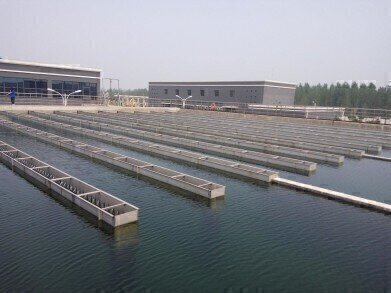Water/Wastewater
What Are the Different Stages of Water Treatment?
Jul 27 2021
In order to meet the demands of a growing population, it’s essential that we harvest as much water as we possibly can to conserve this precious resource. However, before water can be deemed fit for human consumption, it must go through a rigorous water treatment process. Just as the water quality monitoring process has changed over time, so too has that which treats it.
Nowadays, a typical water treatment process will comprise nine distinct steps. While not all of these steps may be in operation at every treatment facility in the UK (or indeed, across the world), they are the basis of the water treatment industry. The nine steps are as follows:
- Collection. Before the water can be treated, it must first be collected from lakes, rivers and reservoirs. Most often, the water is transported from the source to the treatment plant via a complex network of pumps and pipelines, though natural means (such as rivers) may be used.
- Screening. The first step in the treatment process is to screen the water to remove larger items of suspended materials, such as rubbish, plants, trees, animals and other debris. As the name suggests, these are captured and removed via the use of a large metal screen.
- Chemical addition. At this point, chemicals are now added to encourage smaller particles of suspended matter to clump together and form “floc”. The chemicals used to achieve this purpose are called coagulants and there are many different products available.
- Coagulation. After the coagulant has been added to the water, it must be mixed at varying speeds over a period of time to allow the flocs to form (this part of the process is known as flocculation).
- Sedimentation and clarification. Once the flocs have formed, the water is passed over a sedimentation basin. Here, the clumps of floc particles can settle at the bottom of the basin, where they are removed to a disposal pond.
- Filtration. With the larger particles taken out of the water, it must now be filtered through a variety of media such as sand, gravel or granular activated carbon to remove the smaller unwanted particles which still persist.
- Disinfection. The remaining water has now had the vast majority of its impurities removed, but it may still contain bacteria, viruses and other microorganisms. In order to kill these elements, it must be treated with enough chlorine to be effective but not too much to affect taste or odour.
- Storage. The water is now essentially ready for public consumption, but must be stored until demand for it surfaces. It is most commonly stored in underground or overground tanks. As well as drinking water, there must also be a stored supply of water for emergencies such as fires.
- Distribution. The water is finally sent to homes and businesses around the country via a sophisticated system of pumps, tanks, pipelines, hydrants, valves and meters.
If you’re interested in learning more about how water is monitored for quality, or wish to purchase instruments capable of performing such tasks, check out our Buyers Guide, which has a fully range of suitable products available.
Digital Edition
AET 28.2 April/May 2024
May 2024
Business News - Teledyne Marine expands with the acquisition of Valeport - Signal partners with gas analysis experts in Korea Air Monitoring - Continuous Fine Particulate Emission Monitor...
View all digital editions
Events
Jul 30 2024 Jakarta, Indonesia
China Energy Summit & Exhibition
Jul 31 2024 Beijing, China
2024 Beijing International Coal & Mining Exhibition
Aug 07 2024 Beijing, China
IWA World Water Congress & Exhibition
Aug 11 2024 Toronto, Canada
Aug 25 2024 Stockholm, Sweden and online









.jpg)








